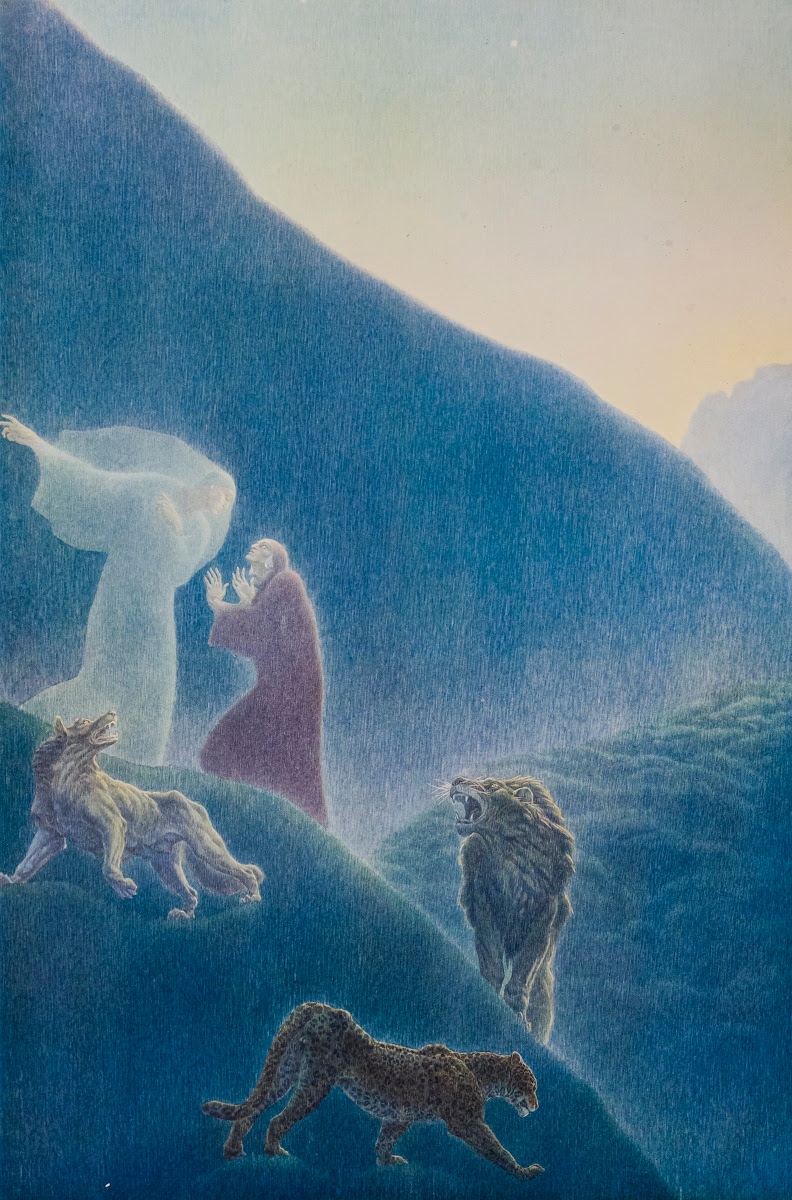“Many artists have interpreted Dante’s afterlife by letting themselves be inspired by the culture and fears of their time. Amos Nattini, between 1915 and 1939, undertakes this great project with passion and dedication, giving us an absolutely human and realistic version of it. His lithographs were published together with the Divine Comedy text in three volumes. The edition of the Cariparma Foundation is dated 1939.” — “Amos Nattini and The Divine Comedy,” Google Arts and Culture, 1900s (Retrieved March 28, 2024).
Wilhelm Lehmbruck’s Paolo and Francesca (1910s)
German artist Wilhelm Lehmbruck (1881-1919) created a depiction of Paolo Malatesta and Francesca Da Rimini, two real-life individuals featured in Dante’s Inferno for engaging in an adulterous relationship. The artist, using drypoint, depicts the affection of the two forbidden lovers in a sketchy and gestural manner that is enriched by the stark, geometrical line-work. — Wilhelm Lehmbruck, “Paolo and Francesca,” Princeton University Art Museum, 1910s (Retrieved March 28, 2024).


